This article was medically reviewed by Theodore Leng, MD. Dr. Leng is a board certified Ophthalmologist and Vitreoretinal Surgeon and an Assistant Professor of Ophthalmology at Stanford University. He completed his MD and Vitreoretinal Surgical Fellowship at Stanford University in 2010. Dr. Leng is a Fellow of the American Academy of Ophthalmology and the American College of Surgeons. He is also a member of the Association for Research in Vision and Ophthalmology, the Retina Society, the Macula Society, the Vit-Buckle Society, as well as the American Society of Retina Specialists. He received the Honor Award by the American Society of Retina Specialists in 2019.
There are 17 references cited in this article, which can be found at the bottom of the page.
This article has been viewed 1,060,928 times.
Whether you want to infiltrate a secret base with the other ninjas at midnight, or just drive home from work on dark roads safely, improving your night vision is a matter of training, maintaining good health practices, and protecting your eyes from harm.
Steps
Enhancing Your Ability to See in the Dark
-
1Utilise your rod cells. Your rod cells take about 30 to 45 minutes to adapt to a change of light around you. Rod cells can only see black and white and have poor resolution but are very sensitive in night vision circumstances.
- Photopigments are chemicals contained in both rod and cone cells that are light-sensitive and convert what you see into a language that your brain can understand. Rhodopsin is a photopigment found in rod cells that is critical to night vision.
- Your ability to adapt to darkness depends on some things that may be out of your control, such as your age, previous eye injury or damage, and any existing eye conditions.
- In order to see in the darkness, you need to understand what it takes to improve your utilisation of the rod cells and manipulate your eyes to more quickly adapt to a sudden change in light.
- If you are trying to look at a dim light, don't look directly at it. By doing this, you are utilising your rod cells instead of your cone cells which would happen if you look directly at the dim light. This trick is often used by astronomers.
-
2Wear red-tinted glasses or goggles. Rod cells don't pick up the color red, so 20–30 minutes of wearing red tinted glasses before you go into a dark area can help you to detect motion around you more quickly.
- By blocking everything in the visible spectrum except red, the glasses will allow your rods to adjust to “darkness” of a sort before you head out.
- This is a common trick that aviators use when they don't have time to sit in perfect darkness and adjust before night-flying.
Advertisement -
3Avoid looking directly at any light sources. Light sources will force your pupils to contract and diminish your night vision.[1]
- The pupil works like the aperture part of a camera, getting smaller or larger depending on the amount of light that is entering the eye. The more light, the smaller the pupil gets. In lower light situations, your pupil opens wide to let in as much light as possible.
- By looking directly into a light source, you are extending the amount of time it will take for your vision to adjust, or readjust, to the low light.
- If you can't avoid looking at a light source, cover or close one eye, or safely divert your gaze, until it passes.
-
4Improve your night vision while driving. Take steps before you get in the car to help enhance your vision as you drive at night.
- As just mentioned, try to avoid looking directly at an oncoming light source. If someone comes around the bend with their high-beams on, protecting one eye will prevent you from getting “flash blindness” in both eyes, allowing you to more easily adjust back to the darkness.
- Look at the white line off to the right but still on your side of the road. This allows you to maintain a safe course, see movement around you with your peripheral vision and still avoid looking directly into someone's high beams.
- Dim your dash lights to a low but safe level to help your vision while driving at night. Also, use your mirror's “night” setting. This helps to reduce glare from vehicles that are behind you.
- Clean your headlights, wipers, and windshield regularly. Spots on the windshield become sources of glare when you are driving at night.
- Have regular maintenance on your car that includes headlight and fog light adjustments. Even a degree or two of difference can prevent your lights from causing vision problems for other drivers.
-
5Let your eyes adjust to the darkness naturally. The best way to see in the dark is to let yourself slowly acclimate by relaxing in perfect darkness for 20 to 30 minutes.[2]
- To adjust to the darkness more quickly, wear an eye mask, or close and cover your eyes, to give your eyes a chance to adjust before entering a darkened area.
- Try an eyepatch. By protecting one eye from light for 20 to 30 minutes, you will be able to enter a darkened area with that eye already accustomed to the darkness.[3]
-
6Use your peripheral vision. Your eyes have natural blind spots and navigating your way through an area in darkness can cause problems if you try to center your gaze.[4]
- Try to focus your gaze on the side of any object you think is there, or just off-center of the direction you are going as you move forward through a dark area. This allows your peripheral vision to help detect movement and object shape much better than trying to look at something directly.
- Using your peripheral vision engages more rod cells, which are key in navigating your way through a dark area, identifying shapes, and detecting movement.
-
7Get low to create silhouettes and look for contrast. Remember, your rod cells do not see color or detail, and they are your guide in the darkness.[5]
- The night sky provides a source of light. By positioning yourself as low as possible, the light from the night sky or a window provides enough contrast to help the rod cells in your eyes do their job more easily.
- In some forms of martial arts training, students are often instructed to stay as low as possible, using the sky to illuminate objects and opponents by creating a silhouette.
- While the rods in your eyes are far more light-sensitive than the cones, they can only discriminate between black and white and provide low-quality images by contrasting the available light source behind objects.
-
8Massage your eyes gently. Close your eyes tightly and use the palms of your hands to apply slight pressure to your eyes.[6] .
- After about 5 or 10 seconds into the massage, the normal blackness turns to white for a few seconds. When the white fades and the blackness returns, open your eyes and your vision will be better in the darkness.
- Special Forces have reportedly used a similar method of squeezing their eyes shut tightly for five to 10 seconds once they were in a dark area. Science has not proven the efficacy of this technique, but it may be helpful for some people.
-
9Use all your senses to “see”. Be sure you move around safely if you are attempting to do so before your eyes have adjusted to the darkness.[7]
- Keep both feet on the ground, your arms outstretched, and move slowly. Listen for changes in sound that may indicate a door, hallway, or window. Be sure to move your arms and hands to avoid walking into a tree or the edge of an open door.
-
10Consider learning to see with sound. Research is ongoing, but promising, in working with people that are blind. They are developing the ability to perform clicking sounds with their tongue, termed “flash sonar”, which is similar to the sonar used by bats.
- By using flash sonar, people can locate objects in front and around them in a remarkable way. For example, one person demonstrated this method by using clicking sounds made with her tongue to “scan” the space in front of her until she could locate a pot held by another person. With a few more clicks, she could identify the type and contour of the lid on the pot.
- Another person that is considered a flash sonar expert can ride a mountain bike through difficult terrain and navigate an obstacle course without incident by using this technique.
- The experts of flash sonar claim that it is a skill that anyone can develop.
Protecting and Strengthening Your Vision
-
1Wear sunglasses during the daytime. A few hours of exposure to bright sunlight light and ultraviolet radiation from the sun can reduce your ability to adjust to darkness.[8]
- Daytime exposure to the bright sunlight without wearing sunglasses can cause your adjustment to the darkness to be delayed by about 10 minutes for every 2 to 3 hours of bright sunlight exposure.
- Plus, in addition to the time delay in adapting to the dark, the degree of night vision is also reduced. For example, ten consecutive days of exposure to bright sunlight without protective eyewear can reduce your night vision by as much as 50%.
- With time, your rods, cones, and photopigments return to baseline. Every person is different in the length of time they may be impacted.
- Sunglasses with neutral gray lenses that transmit 15% of visible light are recommended.
-
2Lower the brightness on your computer screen. If you're working at night, it's best to keep the light on your computer as low as possible.[9]
- Staring directly into a bright computer screen while the rest of your room is super-dark will diminish your night vision considerably. It's an easy and quick trick to seeing better at night.
- Some software programs are available that adjust your screen brightness based on the time of day.
-
3Let your eyes relax regularly. Take frequent breaks from focusing on a screen, reading something in print, or focusing on other things intently for an extended period.[10]
- Rest your eyes often. For every 20 minutes of intense work, especially looking at a computer screen, take a break and look off into the distance for 20 seconds. This gives your eyes a chance to refocus.
- For every two hours of constant focus on a computer screen or something else that requires intent viewing, rest your eyes for 15 minutes.
- Protect your eyes from tiredness by taking short five or ten-minute naps in the middle of the day. Close your eyes and massage them gently. You don't need to go to sleep to rest your eyes.
-
4Quit smoking. Most people know that smoking comes with many health risks, such as lung cancer and COPD, but many don't know that it can lead to serious eye disease or even blindness.[11] Nicotine can cause your eye to stop producing something called rhodopsin, which is a pigment that is essential for night vision.
- If you quit smoking, you may be able to restore your night vision.
-
5Strengthen your peripheral vision. Using your peripheral vision is essential in improving your ability to see in low-light situations.[12]
- Your peripheral vision–what you see out of the corner of your eye–is mostly about movement, utilising the rod cells in your eye.
- Improving your peripheral vision is an effective way of seeing better in low light.
- While it takes a great deal of practice for most people, you can learn to exercise your peripheral vision to strengthen your low-light sight.
- Exercising your eyes to improve your vision, including your peripheral vision, is essential to improving your ability to see in the dark.
-
6Try an exercise used in sports training. Strengthening the peripheral vision is important in many situations, including athletics.[13]
- This exercise is done by using a regular, solid colored, drinking straw. Draw a black line around the center of the straw.
- With the help of a partner, stand one to two feet (0.3 to 0.6 meters) away from the straw armed with a toothpick in each hand. Your partner is to hold the straw horizontally.
- While you are looking at the black line, notice the ends of the straw using your peripheral vision.
- Focus only on the black line. Attempt to place the toothpicks in the ends of the straw on either side without diverting your gaze away from the black line.
- Once this is easy, try using two straws connected to make the exercise more difficult.
-
7Pay attention to your peripheral vision. Another way to improve your peripheral vision for low-light situations is to focus on it and use it more during normal daylight.[14]
- Sit quietly anywhere, but preferably outside where there are a lot of new things to see. Focus on one thing or object directly in front of you.
- Make a mental list of everything you can see around you, both moving and not moving, without diverting your gaze from the central object. Relax your vision and look around to see what you may have missed. Make a mental note as to the general distance from center that you were able to identify things around you.
- Try again in a different area, and see if you can expand the general distance from center that you can identify things around you.
Adjusting Your Diet
-
1Consume more vitamin A. One of the first signs of vitamin A deficiency is night blindness.[15]
- In Ancient Egypt, it was discovered that night blindness could be cured by eating liver, which was later found to be a rich source of vitamin A.
- Low vitamin A levels can also cause the cornea to become very dry, leading to the clouding of the front of the eye, corneal ulcers and vision loss, as well as retina damage and problems with the conjunctiva.
- Carrots, broccoli, squash, cantaloupe, fish, liver, fortified cereals, dairy products, kale, blueberries, and apricots are all excellent sources of vitamin A.
- While increasing your consumption of foods that are rich in vitamin A may be helpful, research done in this area has revealed that, in the case of vitamin A, taking supplements provided higher levels than increasing the dietary sources. Plus, excessive consumption doesn't strengthen your eyes.
- Vitamin A supplements are available in oral doses, like tablets or capsules, and are marketed in either mcg strengths or units. The average recommended adult dose of vitamin A in mcgs is between 800 to 1000 mcg each day. In units, the dose range is between 2600 and 3300 units consumed daily.
- The protein rhodopsin found in the eye breaks down into retinal and opsin when exposed to light and reforms when back in the dark. A severe lack of vitamin A in the diet may result in night blindness, but extra vitamin A will not help one see better than normal.
-
2Increase your consumption of dark green and leafy vegetables. The most benefit from dietary sources in improving night vision — and your eyesight in general — comes from focusing on the vegetables you eat.[16]
- Foods like kale, spinach, and collard greens are full of nutrients that protect your eyes by filtering specific wavelengths of light that can damage your retina.
- These foods may also work to protect your eyes from some degenerative processes, such as age-related macular degeneration.
-
3Eat more healthy fats. Specifically, eat more foods that contain omega-3 fatty acids.[17]
- Omega-3 fatty acids are found in fish, especially oily types of fish like salmon and tuna, kale, vegetable oils, nuts, especially walnuts, flax seeds and flaxseed oil and leafy vegetables.
- Omega-3 fatty acids fight macular degeneration and promote overall eye health and good vision, as well as fighting dry eye.
- In one study, patients who ate oily fish once per week had half the risk of developing neovascular macular degeneration, compared with patients who didn't. Long term, over a period of 12 years or so, the risk remains much lower with a higher level of omega-3s.
-
4Take bilberry. Bilberry is a plant that is used in making different types of medicine.
- Research done on bilberry has determined it to be possibly effective for eye problems that involve the retina.
- The most promising research supports the use of bilberry in situations that involve retina changes related to medical conditions like diabetes and high blood pressure.
- Bilberry has been reviewed for use in improving night vision. The results of the research are contradictory. Some evidence suggests that bilberry may provide some benefit in improving night vision, yet other research does not support those findings.
- The latest rating suggests bilberry is “probably ineffective” in improving night vision.
- Bilberry is not easily found in its raw form but is available as either an extract or made into jams and jellies. Follow the directions on the packaging provided to determine how much to consume each day.
-
5Stay well hydrated. The surface of the eye is 98% water. Dry eyes will struggle to see at night and are linked to overall dehydration.[18]
- Drinking plenty of water is essential to overall good health; however the direct link to fluid intake and improving vision is controversial.
- Some eye experts argue that certain circumstances that negatively impact your level of hydration cause a decrease in the quality of your vision and the overall health of your eyes.
- For example, being exposed to high temperatures, low humidity climates, or intense sunlight can cause the basal tear layer to dehydrate, resulting in a negative impact on your vision.
- Follow recommended dietary guidelines for water intake, aiming for about 64 ounces (1.9 liters) each day depending on your work situation and environmental factors, to maintain your eye health.
Seeking Medical Attention
-
1Visit your eye doctor. Taking care of your vision in both day and night circumstances involves seeing an ophthalmologist and/or an optometrist. Most eye doctors suggest annual appointments to be sure your vision has not significantly changed.[19]
- If you do not see well in natural light, then you won't see well at night either. Schedule an appointment and talk to your doctor about your night vision.
- Be sure any corrective lenses you have are meeting your current needs. Your vision changes naturally over time and your prescription for lenses may need to be updated.
-
2Keep your eyes moist. Work with your doctor to be sure you are addressing any problem you may have with dry eyes.[20]
- Healthy, moist, and relaxed eyes see more effectively in daylight and at night, while tired and dry eyes struggle to pick up motion in low light.
- Take it easy on your eyes by keeping them moist and rested. Blink frequently especially when you are regularly focused on a screen, like a computer, laptop, reader, or TV screen.
- If you struggle with dry eyes, use over-the-counter saline eye drops regularly to fight redness and provide adequate moisture, or talk to your eye doctor about using prescription strength eye products that treat conditions of dry eyes.
-
3Talk to your eye doctor about any specific difficulties. In many routine exams, the doctor may not ask questions about night vision.[21]
- Be sure to describe any problems you may be experiencing with night vision. While many visual changes are related to a natural decline with age, some cases may be tied to an underlying medical condition contributing to the problem.
- Examples of diseases and conditions that cause visual changes include cataracts, macular degeneration, astigmatism, glaucoma, presbyopia, and near- or farsightedness.
-
4Consider an underlying medical reason for your visual changes. Make an appointment with your regular doctor to evaluate possible medical causes. Some medical conditions and medications can contribute to problems with your vision.[22]
- Some examples of medical conditions that may contribute to visual changes include diabetes, migraine headaches, infections, glaucoma, strokes, sudden changes in blood pressure, or sudden trauma like an injury to the head.[23]
-
5Consider your medications. In addition to medical conditions, there are many medications that have visual changes as part of their side effect profile.[24]
- Some common examples of drugs that can alter your vision include muscle relaxers such as cyclobenzaprine, diuretics such as hydrochlorothiazide, and a drug used for seizures, headaches, and mood changes called topiramate.
- Never alter your medications on your own. If you are experiencing visual changes that may be caused by your medications, talk to your doctor to tweak your dose or select an alternative agent that can work just as well for your condition without the unwanted visual changes.
References
- ↑ http://www.aoa.org/optometrists/tools-and-resources/clinical-care-publications
- ↑ http://www.chm.bris.ac.uk/webprojects2003/white/light_and_dark_adaptation.htm
- ↑ https://prezi.com/pqgtgofizhb9/do-pirate-eye-patches-improve-night-vision/
- ↑ http://www.itstactical.com/intellicom/tradecraft/navigating-the-dark-how-to-preserve-your-night-vision/
- ↑ http://www.aoa.org/optometrists/tools-and-resources/clinical-care-publications
- ↑ http://www.aoa.org/optometrists/tools-and-resources/clinical-care-publications
- ↑ http://www.spiegel.de/international/germany/sight-for-the-blind-the-growing-success-of-seeing-with-sound-a-768868.html
- ↑ http://www.aoa.org/optometrists/tools-and-resources/clinical-care-publications/aviation-vision/the-eye-and-night-vision
- ↑ http://www.aoa.org/patients-and-public/caring-for-your-vision/protecting-your-vision/computer-vision-syndrome?sso=y
- ↑ http://www.aoa.org/patients-and-public/caring-for-your-vision/protecting-your-vision/computer-vision-syndrome?sso=y
- ↑ http://www.cdc.gov/features/smoking-eyesight/
- ↑ http://www.aoa.org/optometrists/tools-and-resources/clinical-care-publications/aviation-vision/the-eye-and-night-vision?sso=y
- ↑ http://www.stack.com/2011/07/19/exercise-your-eyes-to-increase-peripheral-vision-for-athletics/
- ↑ http://www.stack.com/2011/07/19/exercise-your-eyes-to-increase-peripheral-vision-for-athletics/
- ↑ http://www.scientificamerican.com/article/fact-or-fiction-carrots-improve-your-vision/
- ↑ http://www.scientificamerican.com/article/fact-or-fiction-carrots-improve-your-vision/
- ↑ http://www.allaboutvision.com/nutrition/fatty_acid_1.htm
- ↑ http://www.optometricmanagement.com/articleviewer.aspx?articleID=106128
- ↑ http://www.mayoclinic.org/symptom-checker/vision-problems-adult/related-factors/itt-20009075
- ↑ http://www.mayoclinic.org/symptom-checker/vision-problems-adult/related-factors/itt-20009075
- ↑ http://www.mayoclinic.org/symptom-checker/vision-problems-adult/related-factors/itt-20009075
- ↑ https://nei.nih.gov/diabetes/content/english/protecting
- ↑ https://www.drugs.com/cg/blurred-vision-ambulatory-care.html
- ↑ https://www.drugs.com/search.php?searchterm=drugs+that+cause+vision+changes
About This Article
To see in the dark, try wearing red tinted glasses for 20-30 minutes before you turn the lights off, which will help your eyes quickly adjust to the darkness. You can also try closing your eyes and massaging them gently for 5-10 seconds, which may make it easier to see in the dark when you open them. To improve your eyesight in general so you can see better in the dark, eat more leafy green vegetables, as well as foods that are rich in vitamin A, since they're good for your eyes. Also, drink plenty of water every day since dehydration can worsen your vision. To learn how to strengthen your peripheral vision, scroll down!
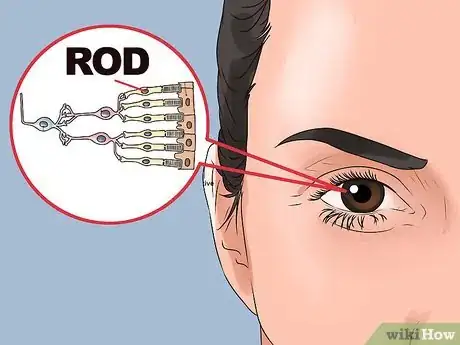
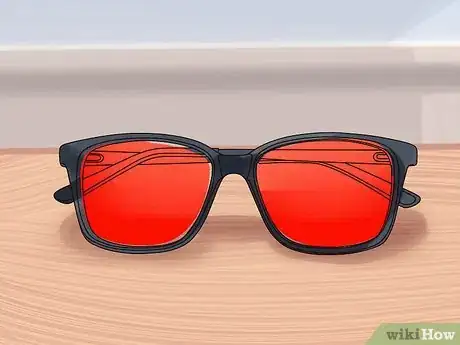
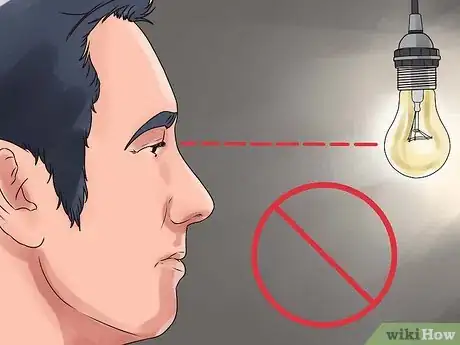
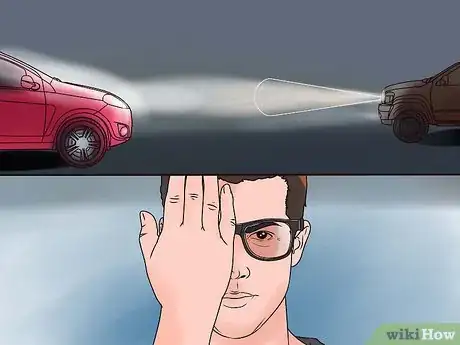


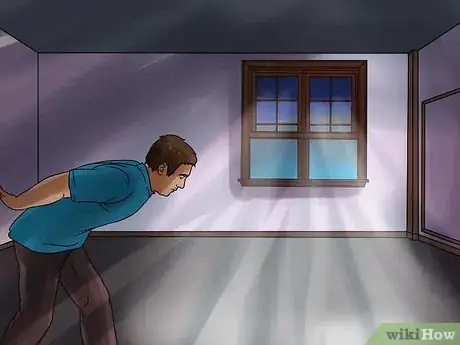
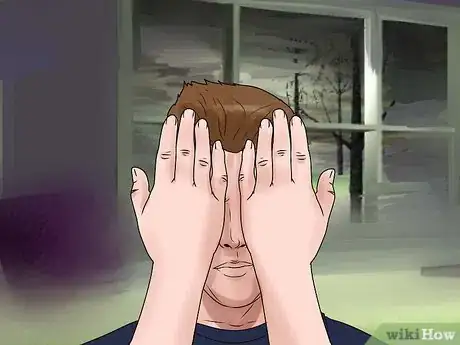
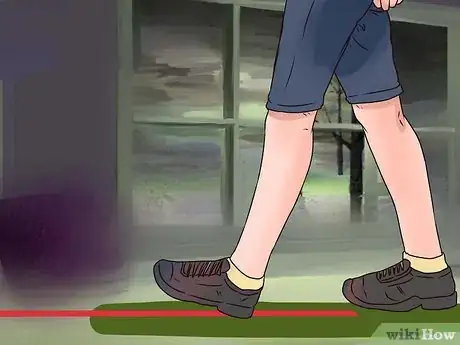
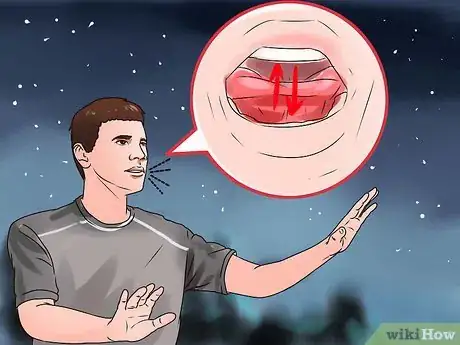

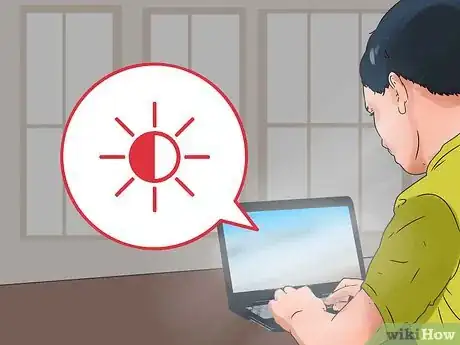

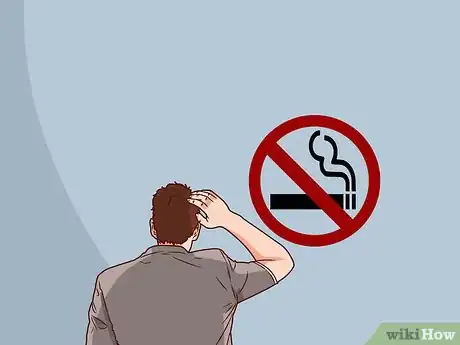
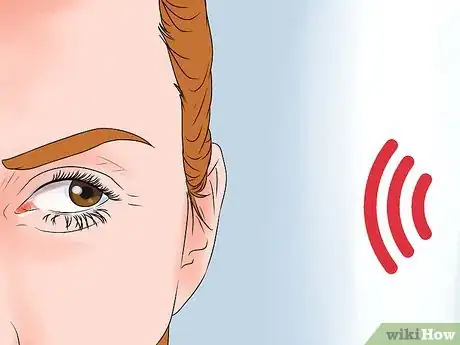
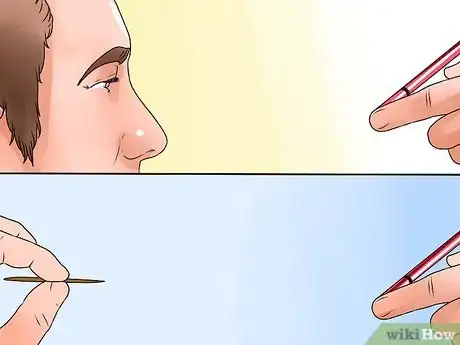
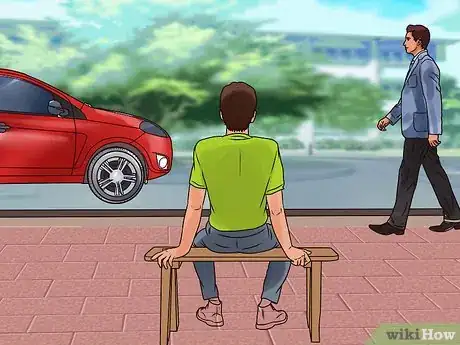




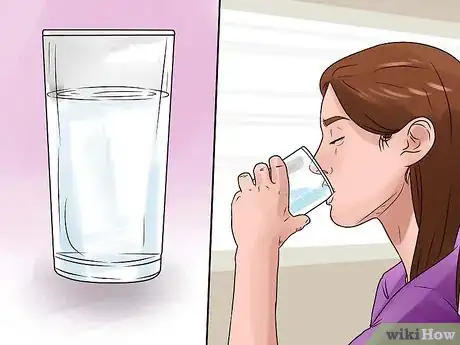
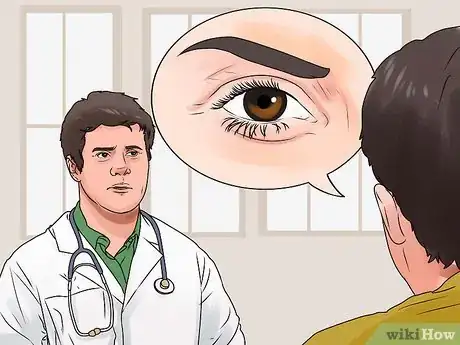

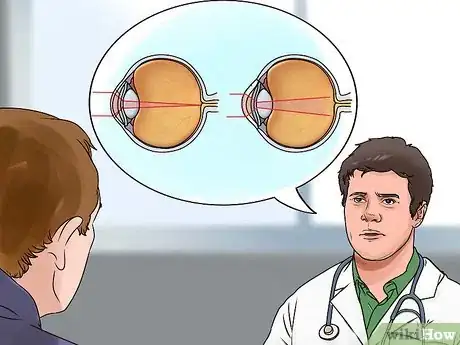
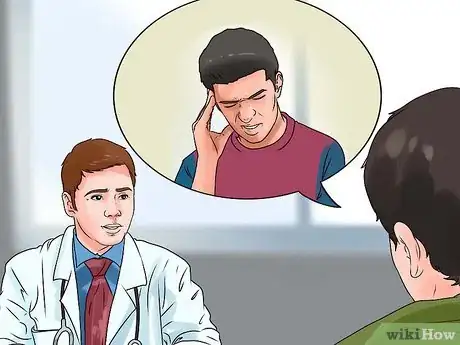
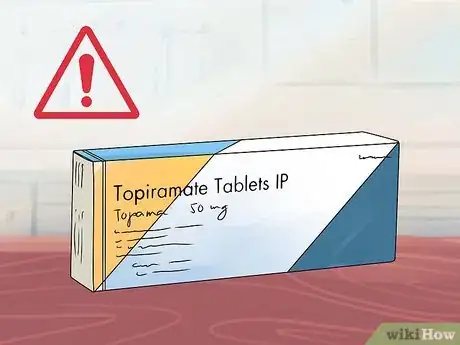

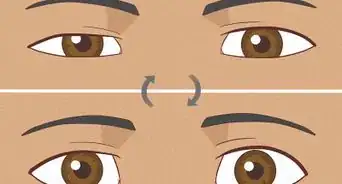
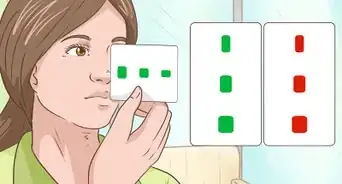
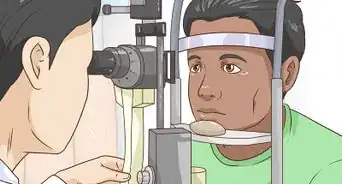



















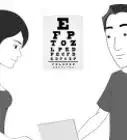
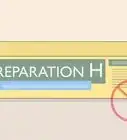
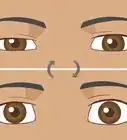
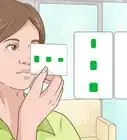



































Medical Disclaimer
The content of this article is not intended to be a substitute for professional medical advice, examination, diagnosis, or treatment. You should always contact your doctor or other qualified healthcare professional before starting, changing, or stopping any kind of health treatment.
Read More...